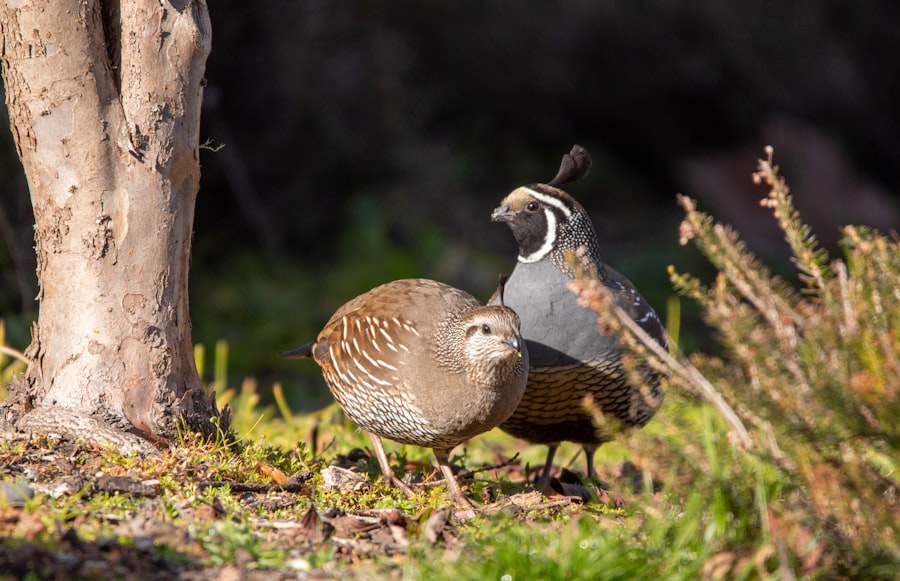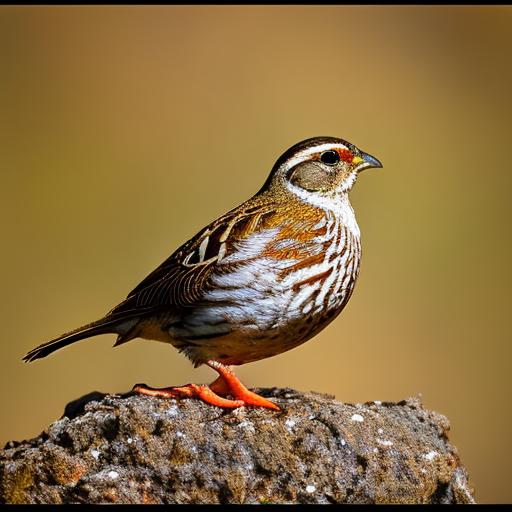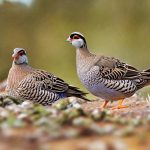Quail are small game birds that have been a popular source of food for centuries. They are known for their delicate, flavorful meat and are a great addition to any homestead or small farm. Keeping quail for food is a sustainable and rewarding practice that can provide a healthy source of protein for you and your family. Quail are relatively easy to care for and can be raised in a small space, making them an ideal choice for those with limited land or resources. Whether you are a seasoned homesteader or just starting out, raising quail for food can be a fun and fulfilling experience.
Quail meat is lean, high in protein, and rich in nutrients such as iron and B vitamins. It has a delicate flavor that is often compared to chicken, but with a slightly gamey taste. Quail eggs are also highly prized for their rich, flavorful yolks and can be used in a variety of dishes. By raising quail for food, you can have a sustainable source of meat and eggs right in your backyard. In this article, we will explore the different aspects of keeping quail for food, including choosing the right breed, housing and care, feeding and nutrition, breeding and raising chicks, harvesting and processing, and delicious recipes to try at home.
Key Takeaways
- Quail are a great source of lean protein and can be raised for food in a small space, making them an ideal option for urban or small-scale farmers.
- When choosing a quail breed for meat production, consider factors such as growth rate, feed efficiency, and temperament to ensure a successful and efficient operation.
- Proper housing and care for quail includes providing a clean and spacious environment, as well as protection from predators and extreme weather conditions.
- Feeding quail a balanced diet that includes high-quality protein and essential nutrients is crucial for their growth and overall health.
- Breeding and raising quail chicks requires attention to temperature, humidity, and sanitation to ensure a high survival rate and healthy development.
- Harvesting and processing quail for meat should be done humanely and hygienically, following proper techniques to ensure food safety and quality.
- Try delicious quail recipes at home, such as grilled quail with herbs, quail scotch eggs, or quail adobo, to enjoy the flavorful and nutritious meat.
Choosing the Right Quail Breed for Meat Production
When it comes to raising quail for meat production, choosing the right breed is crucial. There are several breeds of quail that are commonly raised for their meat, including Coturnix (also known as Japanese quail), Bobwhite, and Pharaoh quail. Coturnix quail are the most popular choice for meat production due to their fast growth rate, high egg production, and relatively docile nature. They come in a variety of colors and are known for their tender, flavorful meat.
Bobwhite quail are another popular choice for meat production, especially in the United States. They are larger than Coturnix quail and have a slightly gamier flavor. Pharaoh quail, also known as Egyptian quail, are another option for meat production. They are similar in size to Coturnix quail and are known for their hardiness and adaptability to different climates.
When choosing a quail breed for meat production, it’s important to consider factors such as growth rate, egg production, temperament, and adaptability to your climate. Additionally, it’s important to source your quail from a reputable breeder to ensure that you are getting healthy, high-quality birds.
Housing and Care for Quail
Proper housing and care are essential for raising healthy quail for food. Quail can be raised in a variety of housing setups, including cages, aviaries, or small coops. The key is to provide them with enough space to move around comfortably and access to fresh air and sunlight. Quail are social birds and should be kept in groups to prevent stress and aggression.
When it comes to bedding, straw or wood shavings are commonly used to provide a comfortable and clean environment for the quail. It’s important to keep their living area clean and dry to prevent the spread of disease and parasites. Additionally, providing a secure enclosure is crucial to protect the quail from predators such as raccoons, foxes, and birds of prey.
Quail also require a balanced diet and access to clean water at all times. They can be fed a commercial game bird feed or a mix of grains such as millet, sorghum, and cracked corn. It’s important to provide them with enough protein to support their growth and egg production. Additionally, offering them access to grit or small stones is essential for their digestion.
Regular health checks are also important to ensure that the quail are free from diseases and parasites. Keeping their living area clean, providing them with a balanced diet, and monitoring their behavior can help prevent common health issues. Overall, providing proper housing and care is essential for raising healthy quail for food.
Feeding and Nutrition for Quail
Feeding and nutrition play a crucial role in raising healthy quail for food production. Quail require a balanced diet that provides them with the necessary nutrients to support their growth, egg production, and overall health. A commercial game bird feed is a convenient option that provides the essential nutrients quail need, including protein, vitamins, and minerals.
In addition to commercial feed, quail can also be fed a mix of grains such as millet, sorghum, cracked corn, and wheat. This can be supplemented with kitchen scraps such as vegetable peels and fruit trimmings. It’s important to provide them with enough protein to support their growth and egg production, especially during the breeding season.
Access to clean water at all times is essential for quail. They should have access to fresh water for drinking and bathing. Providing them with clean water helps prevent dehydration and supports their overall health.
In addition to a balanced diet, providing access to grit or small stones is important for quail. Grit helps them grind their food in their gizzards, aiding in digestion. It’s important to monitor their food intake and adjust their diet as needed based on their growth stage and egg production.
Overall, feeding and nutrition play a crucial role in raising healthy quail for food production. Providing them with a balanced diet that meets their nutritional needs is essential for their overall health and well-being.
Breeding and Raising Quail Chicks
Breeding and raising quail chicks is an important aspect of keeping quail for food production. Quail reach sexual maturity at around 6-8 weeks of age, depending on the breed. During the breeding season, it’s important to provide them with the right conditions to encourage mating and egg laying.
Quail can be bred in groups with a ratio of one male to every three to five females. Providing them with nesting boxes filled with straw or wood shavings can encourage egg laying. It’s important to collect the eggs daily to prevent them from being damaged or eaten by the quail.
Once the eggs are collected, they can be placed in an incubator or under a broody hen for hatching. Quail eggs typically hatch within 17-18 days. It’s important to provide the chicks with a warm and draft-free environment to support their growth and development.
Feeding the chicks a high-protein starter feed is essential for their growth and development. It’s important to provide them with access to clean water at all times and monitor their health closely during the first few weeks of life.
As the chicks grow, they can be transitioned to a grower feed that provides them with the necessary nutrients for their continued growth. Providing them with enough space to move around comfortably is important for their overall well-being.
Overall, breeding and raising quail chicks is an important aspect of keeping quail for food production. Providing them with the right conditions for breeding, hatching, and raising the chicks is essential for maintaining a healthy quail population.
Harvesting and Processing Quail for Meat

Harvesting and processing quail for meat production is an important step in the overall process of keeping quail for food. Quail reach market weight at around 6-8 weeks of age, depending on the breed. When it comes time to harvest the quail, it’s important to do so humanely and efficiently.
Quail can be harvested by either slaughtering them on-farm or taking them to a processing facility. If slaughtering on-farm, it’s important to do so in a calm and quiet environment to minimize stress on the birds. Using a sharp knife or poultry shears, the quail can be humanely slaughtered by cutting the jugular vein.
Once slaughtered, the quail can be processed by removing the feathers, gutting the bird, and cleaning it thoroughly. The meat can then be chilled or frozen for later use.
If taking the quail to a processing facility, it’s important to choose a reputable facility that follows humane slaughtering practices. This ensures that the quail are handled in a respectful manner throughout the processing process.
Overall, harvesting and processing quail for meat production is an important step in the overall process of keeping quail for food. Whether slaughtering on-farm or taking them to a processing facility, it’s important to do so in a humane and efficient manner.
Delicious Quail Recipes to Try at Home
Once you have harvested and processed your quail, there are countless delicious recipes that you can try at home. Quail meat is versatile and can be used in a variety of dishes, from simple grilled preparations to more complex recipes.
One popular way to prepare quail is by grilling or roasting them whole. This allows you to enjoy the delicate flavor of the meat with minimal seasoning. You can marinate the quail in herbs and spices before grilling or roasting them for added flavor.
Another delicious way to prepare quail is by pan-searing them with a flavorful sauce. Quail pairs well with sweet and savory flavors such as honey, balsamic vinegar, or fruit compotes. This creates a delicious glaze that enhances the natural flavor of the meat.
Quail can also be used in stews, soups, or pasta dishes for a hearty meal. The tender meat adds depth of flavor to these dishes and pairs well with vegetables and grains.
For those who enjoy international cuisine, there are countless recipes from around the world that feature quail as the main ingredient. From Moroccan spiced quail to Italian-style roasted quail, there are endless possibilities for incorporating quail into your cooking repertoire.
In addition to savory dishes, quail eggs can also be used in a variety of recipes such as omelets, frittatas, or pickled for snacking.
Overall, there are countless delicious recipes that you can try at home using quail meat and eggs. Whether you prefer simple preparations or more complex dishes, there are endless possibilities for incorporating this flavorful ingredient into your cooking repertoire.
In conclusion, keeping quail for food production is a sustainable and rewarding practice that provides a healthy source of protein for you and your family. By choosing the right breed, providing proper housing and care, feeding them a balanced diet, breeding and raising chicks, harvesting and processing them humanely, and trying delicious recipes at home, you can enjoy the benefits of raising quail for food on your homestead or small farm. Whether you are new to raising poultry or have years of experience, keeping quail for food production is an enjoyable endeavor that allows you to connect with your food in a meaningful way.
If you’re interested in keeping quail for food, you may also want to explore the topic of feeding ducks. Understanding the dietary needs of ducks is crucial for their health and productivity. Poultry Wizard offers a comprehensive guide on what to feed ducks, providing valuable insights for anyone looking to raise poultry for food. Check out their article on what to feed ducks to gain a deeper understanding of poultry nutrition.
FAQs
What are the benefits of keeping quail for food?
Quail are a great source of lean protein and their eggs are considered a delicacy. They are also relatively easy to raise and require less space compared to other poultry.
What do quail eat?
Quail are omnivores and eat a diet of seeds, grains, insects, and small invertebrates. They can also be fed commercial quail feed.
How much space do quail need?
Quail require about 1 square foot of space per bird in a coop or cage. They also need access to an outdoor area for foraging.
What are the housing requirements for quail?
Quail need a secure coop or cage to protect them from predators. The coop should be well-ventilated and provide protection from the elements.
How do you raise quail for food?
To raise quail for food, you will need to provide them with proper housing, feed, and water. You will also need to collect their eggs and process the birds for meat if desired.
Are there any health considerations when raising quail for food?
Quail can be susceptible to diseases and parasites, so it’s important to keep their living area clean and provide them with proper nutrition. It’s also important to handle and process the birds in a sanitary manner to prevent foodborne illness.
Meet Walter, the feathered-friend fanatic of Florida! Nestled in the sunshine state, Walter struts through life with his feathered companions, clucking his way to happiness. With a coop that’s fancier than a five-star hotel, he’s the Don Juan of the chicken world. When he’s not teaching his hens to do the cha-cha, you’ll find him in a heated debate with his prized rooster, Sir Clucks-a-Lot. Walter’s poultry passion is no yolk; he’s the sunny-side-up guy you never knew you needed in your flock of friends!







